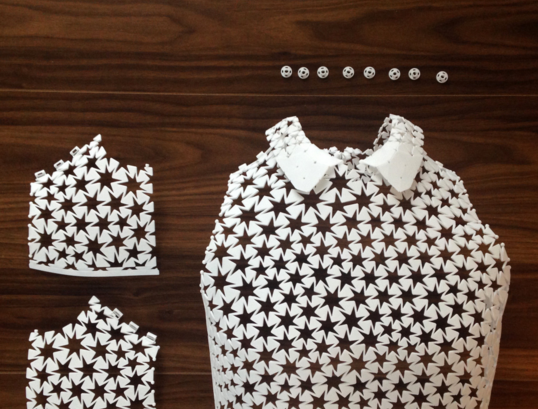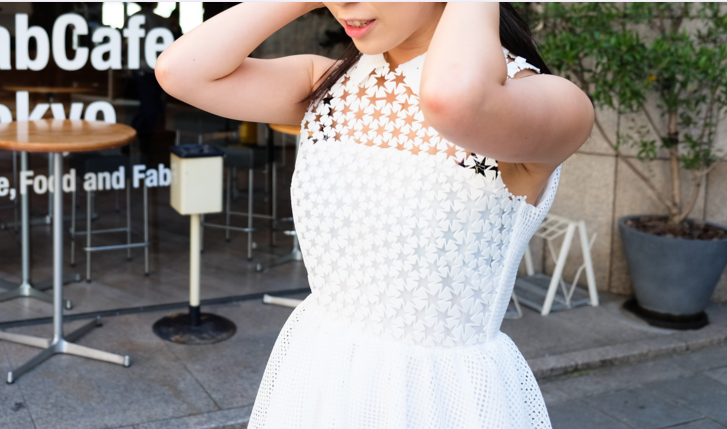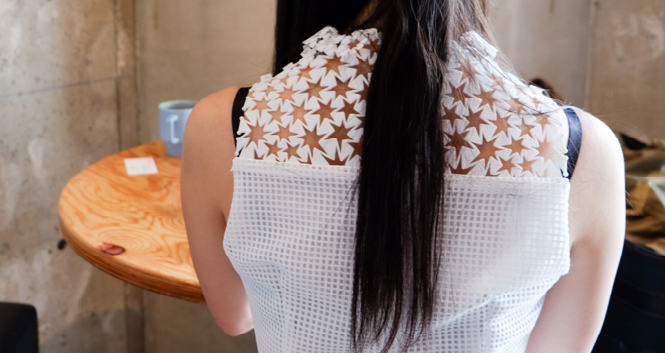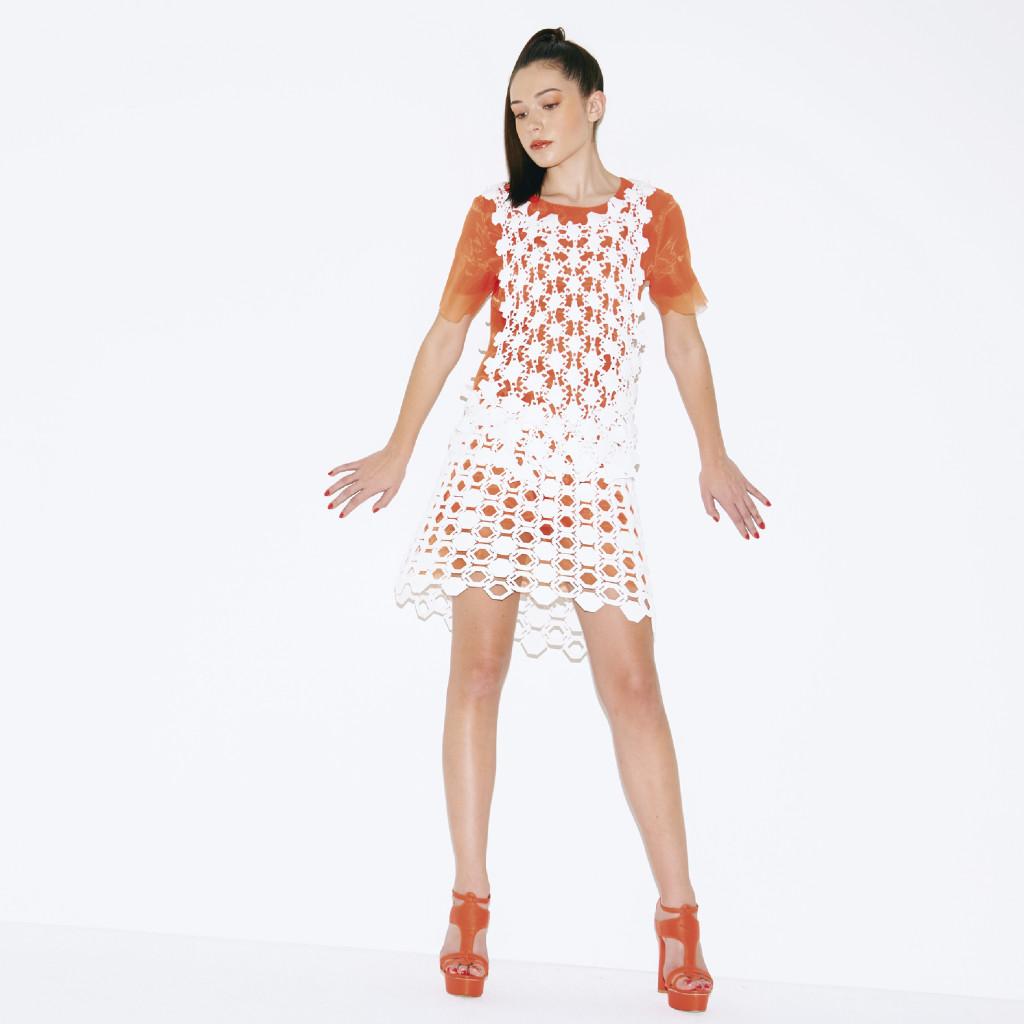Sensible & Lovely! Japanese Designer Uses 3D Scanning, Printing & Auxetics to Create Truly Wearable Apparel
 We’ve been telling you about 3D scanning via Artec 3D’s hardware and software for quite some time now, along with tools like Microsoft’s Kinect, popular in areas such as full body scanning for costumes and cosplay. With scanners also used in everything from massive archiving jobs to complex industrial projects, those applications are impressive, but many probably wonder how many people actually use 3D scanning equipment for innovating on the more affordable and basic entrepreneurial level. Artec offers an option for pretty much everybody though, from spectacular collaborations to those working at the desktop independently.
We’ve been telling you about 3D scanning via Artec 3D’s hardware and software for quite some time now, along with tools like Microsoft’s Kinect, popular in areas such as full body scanning for costumes and cosplay. With scanners also used in everything from massive archiving jobs to complex industrial projects, those applications are impressive, but many probably wonder how many people actually use 3D scanning equipment for innovating on the more affordable and basic entrepreneurial level. Artec offers an option for pretty much everybody though, from spectacular collaborations to those working at the desktop independently.
With the combination of both Artec’s 3D Studio, the highly compatible Kinect for Windows scanner, and a 3D Systems SLS 3D printer, one very talented and resourceful Japanese designer may be rolling out a new path on the fashion runway when it comes to 3D printed apparel. While we’ve certainly followed a plethora of fashions at this point, featuring everything from intricate weaponry in apparel to gold-plated heels, there hasn’t been much in the way of realistic clothing you or I might actually wear to a get-together or god forbid, to work.
 Using a polyamide material for the pieces, designer Masahuru Ono–who works under the creator name UTB, and whose 3D printed VR headset caught our eye a few months ago–was well aware of the challenges in using 3D printing for an entire piece of clothing, as opposed to just an accent or an attached piece like a collar, belt, or hemline. He set out to meet that challenge with compromise and balance–and while practical is what he was in search of–I think we can all agree that one word describes the outcome best: lovely.
Using a polyamide material for the pieces, designer Masahuru Ono–who works under the creator name UTB, and whose 3D printed VR headset caught our eye a few months ago–was well aware of the challenges in using 3D printing for an entire piece of clothing, as opposed to just an accent or an attached piece like a collar, belt, or hemline. He set out to meet that challenge with compromise and balance–and while practical is what he was in search of–I think we can all agree that one word describes the outcome best: lovely.
The designer discovered that while he was interested in forming far more than just 3D printed accents, he could make incredible looking, comprehensive designs with combinations of 3D printed materials–and hand finishing.
And while the designer was involved with mastering scanning, software, and 3D printing to make the quintessential ready-wear clothing, he also began examining auxetics, which in terms of textiles is a phenomena that can be explored numerous ways as it promotes ‘growth’ or flexibility, and can be used for its spongy and shock-absorbing qualities.
“We propose practical clothes made through 3D printing that utilizes an auxetic pattern,” UTB told 3DPrint.com. “We believe these clothes will revolutionize how 3D printing and fashion are connected.”
 The auxetic patterns the team was able to create allow for flexibility but durability as well. Those wearing the clothes are able to ‘maintain a beautiful figure’ but they don’t appear overly stiff either, as is an obvious challenge when observing many pieces of 3D printed apparel from works of hobbyists to those of many still being seen on the runway.
The auxetic patterns the team was able to create allow for flexibility but durability as well. Those wearing the clothes are able to ‘maintain a beautiful figure’ but they don’t appear overly stiff either, as is an obvious challenge when observing many pieces of 3D printed apparel from works of hobbyists to those of many still being seen on the runway.
“We also verified firsthand, after many repeated tests, that it is possible to directly [sew] together cloth and nylon parts,” UTB told 3DPrint.com. “After that we manufactured a dress for this project from a sewing pattern, performed a 3D scan of what had been sewn, and obtained the 3D data.”
The dresses, with the chest, stomach, and back areas produced on the 3D printer, appear lightweight and comfortable, and perfect for dressing up or down–and as we can see, not out of place in a cafe or on a real street. Extremely attractive, and relevant to fashion today, the different textures and designs joined together in the auxetic fabric are stylish and classic. As UTB points out, they also made the dress, sewn together in a way that would not present a ‘nuisance’ to the wearer.
While UTB handled the design and 3D modeling, structural calculations for the pieces were made by engineer Taisuke Ohshima. Not only are these exact designs something we’d love to see hanging in the closet, they should also serve as an indicator for the future of 3D printing in apparel, allowing for incredible personalized fit due to the customizations allowed through digital design and fabrication, as well as affordability and accessibility. You can see more of UTB’s designs in his Shapeways and Rinkak shops. Discuss these designs in the 3D Printed Wearable Apparel forum thread on 3DPB.com.
[Photos: Masaharu Ono, provided directly to 3DPrint.com]Subscribe to Our Email Newsletter
Stay up-to-date on all the latest news from the 3D printing industry and receive information and offers from third party vendors.
Print Services
Upload your 3D Models and get them printed quickly and efficiently.
You May Also Like
Consolidation in AM: How 2025 Is Shaping the Industry’s New Normal
The first half of 2025 has been marked by a clear shift in the additive manufacturing (AM) industry. Companies are no longer just focused on developing new tech by themselves....
Etsy Design Rule Change Reduces Selection of 3D Printed Goods
Online marketplace Etsy has implemented a rule change requiring all 3D printed goods on the site to be original designs. The update to the site’s Creativity Standards states, ¨Items produced using...
U.S. Congress Calls Out 3D Printing in Proposal for Commercial Reserve Manufacturing Network
Last week, the U.S. House of Representatives’ Appropriations Committee moved the FY 2026 defense bill forward to the House floor. Included in the legislation is a $131 million proposal for...
Transforming From Tourist to Native: Duro CEO Michael Corr Explains Why the Company Rebuilt its PLM Software on AI
In these early innings of the AI boom, many market analysts have expressed concern that AI spend has gotten too far ahead of the technology’s proven ability to deliver significant...

































